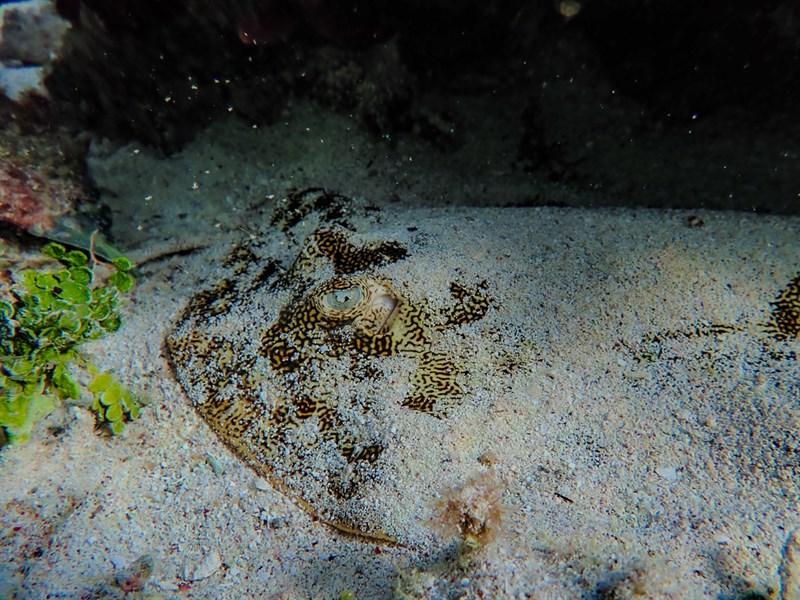The Yellow Stingray (Urobatis jamaicensis) is a fascinating species of stingray found in the coastal waters of the western Atlantic Ocean. Known for its distinctive yellow coloration and powerful stinger, this ray plays a crucial role in the marine ecosystem.
Description & Characteristics
The Yellow Stingray is a relatively small ray, reaching a maximum size of 76.0 cm. The dorsal surface of its body is a vibrant yellow, often with dark spots or blotches. This coloration provides excellent camouflage against the sandy seafloor. Like other stingrays, Urobatis jamaicensis possesses a flattened body shape, with large pectoral fins that function like wings, enabling it to glide gracefully through the water. A long, whip-like tail extends from its body, ending in a sharp, venomous spine. This spine is used for defense against predators and can deliver a painful sting. The underside of the Yellow Stingray is typically white.
Habitat and Occurrence
The Yellow Stingray (Urobatis jamaicensis) prefers shallow, coastal waters with sandy bottoms. Its depth range extends from 1.0 to 25.0 meters, placing it within the neritic zone, the area of the ocean that stretches from the shoreline to the edge of the continental shelf. This species can be found in various marine habitats, including estuaries, bays, and inshore waters. The Yellow Stingray is a common sight along the coasts of Florida, the Caribbean, and the Gulf of Mexico, making it a familiar inhabitant of these warm, tropical waters.
Taxonomy
The Yellow Stingray (Urobatis jamaicensis) belongs to the Class: Elasmobranchii, which includes sharks, rays, and skates. This class is further categorized within the Order: Myliobatiformes, known for their flattened bodies and wide pectoral fins. The Yellow Stingray falls under the Family: Urotrygonidae, a family of stingrays characterized by their distinct body shapes and venomous spines.
Feeding
The Yellow Stingray is a carnivorous predator. Its diet primarily consists of small marine invertebrates, including clams, shrimps, worms, and small fish. It uses its sensitive electroreceptors to detect prey buried beneath the sand. Once located, the stingray uses its powerful jaws to crush the prey, consuming its flesh. The Yellow Stingray’s feeding habits make it an important component of the food web, helping to regulate populations of various invertebrates and small fish.

Image References